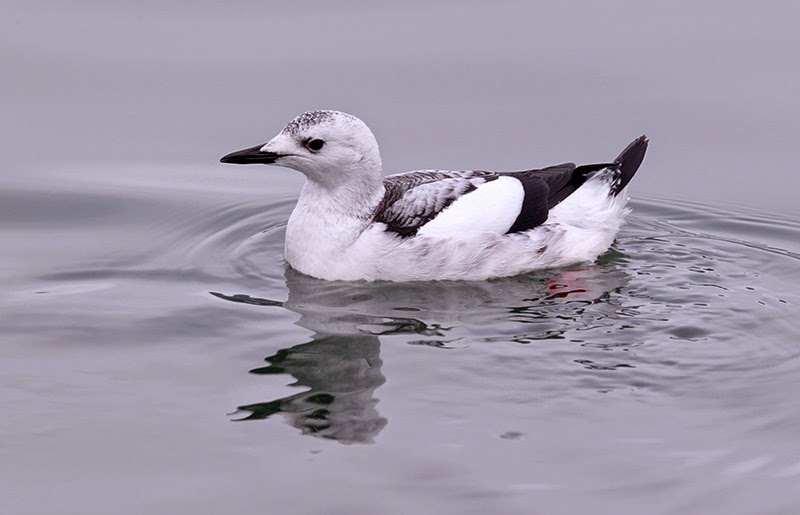Black Guillemots in Newfoundland are the definition of the word ubiquitous, defined in my dictionary as present everywhere simultaneously. They are almost a non-bird as you ignore their presence like flotsam on the sea's surface. Yet it is still a bird of character. An alcid with spunk. Despite their ever presence it is not an easy bird to photograph well. Back in my previous life where we shot all species of Newfoundland alcids for food, the pigeon as we knew them, rarely found their way to the roaster. Pigeon (a.k.a.) the Black Guillemot is a bird with a head on its shoulders. It is a very alert bird. It is always aware of its surrounding and can take to wing much quicker than your average lead-weight body to wing ratio murre, puffin, Dovekie or Razorbill. Perhaps it is because it spends a life time around the rocky shores where there are dangers to be aware of unlike the other five species of alcids that spend most of their life on the open sea where they have bags of time to see any approaching dangers.
With a plan and time a photographer could get killer photos of Black Guillemots in both summer and winter plumage but being a happenstance bird photographer, a winter wharf is definitely the best opportunity for a happenstance photo-session with the wily Black Guillemot in winter.
On Sunday morning I was doing the rounds of St. John's harbour when I noticed a winter plumaged Black Guillemot feeding close to the government wharf on the south side of the harbour. Being a Sunday there were no employees parking their cars in the way along the edge of the wharf giving me the freedom to move the car to the area the guillemot was feeding.
I got some better than average snaps. But then I realized there were more guillemots hanging 100 m out from the wharf. To shortened the story, it turned out there were five Black Guillemots feeding by the wharf. They would swim into the wharf edge and to feed on critters hanging out within the wharf structure, then swim off shore to take a break in the safety zone. It was my opportunity to get close up photos of the birds when they came into the wharf to feed. For some particular reason they were not so wary of my car. I suspect they had been feeding here for a few days and had built up a confidence level in feeding close to the wharf,
A group of five Black Guillemots still in winter plumage or in the process of changing into breeding plumage, especially the left-most bird in St. John's harbour on 29 March 2015.
They guillemots came into the wharf to feed every 10-15 minutes providing exceptional opportunities for photographs.
All of the birds were adults according to the clean white wing patches. The 1st winter birds should show fine dark barring to some of the wing covert tips blemishing the immaculate wing patch.
With the pack ice hugging the coast from Labrador to northeast Newfoundland many of the Black Guillemots we see in late winter on the Avalon Peninsula could be Arctic breeders which are said to be whiter in winter plumage. This could be one of those, however there is so much variation in the plumage of winter guillemots I suspect you can never know for sure if you are looking at an Arctic or local breeder.
This bird was in the process of turning black. While there are some birds in near breeding plumage on the Avalon Peninsula now, most are still closer to winter plumage.
This one was so close it could hear the clicking of the shutter.
Seemingly relaxed, the rising of the rump is a telltale sign it is about to dive.
Like this....
A true sign of spring in the Avalon winter landscape is the presence of many Black-legged Kittiwakes in St. John's harbour like this one that ventured over to the wharf.






































